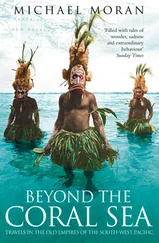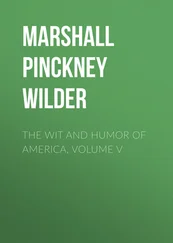Guanaguana has as yet no church. The old monk, who during thirty years had lived in the forests of America, observed to us that the money of the community, or the produce of the labour of the Indians, was employed first in the construction of the missionary's house, next in that of the church, and lastly in the clothing of the Indians. He gravely assured us that this order of things could not be changed on any pretence, and that the Indians, who prefer a state of nudity to the slightest clothing, are in no hurry for their turn in the destination of the funds. The spacious abode of the padre had just been finished, and we had remarked with surprise, that the house, the roof of which formed a terrace, was furnished with a great number of chimneys that looked like turrets. This, our host told us, was done to remind him of a country dear to his recollection, and to picture to his mind the winters of Aragon amid the heat of the torrid zone. The Indians of Guanaguana cultivate cotton for their own benefit as well as for that of the church and the missionary. The natives have machines of a very simple construction to separate the cotton from the seeds. These are wooden cylinders of extremely small diameter, within which the cotton passes, and which are made to turn by a treadle. These machines, however imperfect, are very useful, and they begin to be imitated in other Missions. The soil of Guanaguana is not less fertile than that of Aricagua, a small neighbouring village, which has also preserved its ancient Indian name. An almuda of land, 1850 square toises, produces in abundant years from 25 to 30 fanegas of maize, each fanega weighing 100 pounds. But here, as in other places, where the bounty of nature retards industry, a very small number of acres are cleared, and the culture of alimentary plants is neglected. Scarcity of subsistence is felt, whenever the harvest is lost by a protracted drought. The Indians of Guanaguana related to us as a fact not uncommon, that in the preceding year they, their wives, and their children, had been for three months al monte; by which they meant, wandering in the neighbouring forests, to live on succulent plants, palm-cabbages, fern roots, and fruits of wild trees. They did not speak of this nomad life as of a state of privation.
The beautiful valley of Guanaguana stretches towards the east, opening into the plains of Punzera and Terecen. We wished to visit those plains, and examine the springs of petroleum, lying between the river Guarapiche and the Rio Areo; but the rainy season had already arrived, and we were in daily perplexity how to dry and preserve the plants we had collected. The road from Guanaguana to the village of Punzera runs either by San Felix or by Caycara and Guayuta, which is a farm for cattle (hato) of the missionaries. In this last place, according to the report of the Indians, great masses of sulphur are found, not in a gypseous or calcareous rock, but at a small depth below the soil, in a bed of clay. This singular phenomenon appears to me peculiar to America; we found it also in the kingdom of Quito, and in New Spain. On approaching Punzera, we saw in the savannahs small bags, formed of a silky tissue suspended from the branches of the lowest trees. It is the seda silvestre, or wild silk of the country, which has a beautiful lustre, but is very rough to the touch. The phalaena which produces it is probably analogous with that of the provinces of Gua[?]uato and Antioquia, which also furnish wild silk. We found in the beautiful forest of Punzera two trees known by the names of curucay and canela; the former, of which we shall speak hereafter, yields a resin very much sought after by the Piaches, or Indian sorcerers; the leaves of the latter have the smell of the real cinnamon of Ceylon.* (* Is this the Laurus cinnamomoides of Mutis? What is that other cinnamon tree which the Indians call tuorco, common in the mountains of Tocayo, and at the sources of the Rio Uchere, the bark of which is mixed with chocolate? Father Caulin gives the name of curucay to the Copaifera officinalis, which yields the Balsam of Capivi.—Hist. Corograf., pages 24 and 34.) From Punzera the road leads by Terecin and Nueva Palencia, (a new colony of Canarians,) to the port of San Juan, situated on the right bank of the river Areo; and it is only by crossing this river in a canoe, that the traveller can arrive at the famous petroleum springs (or mineral tar) of the Buen Pastor. They were described to us as small wells or funnels, hollowed out by nature in a marshy soil. This phenomenon reminded us of the lake of asphaltum, or of chopapote, in the island of Trinidad,* (* Laguna de la Brea, south-east of the port of Naparima. There is another spring of asphaltum on the eastern coast of the island, in the bay of Mayaro.) which is distant from the Buen Pastor, in a straight line, only thirty-five sea leagues.
Having long struggled to overcome the desire we felt to descend the Guarapiche to the Golfo Triste, we took the direct road to the mountains. The valleys of Guanaguana and Caripe are separated by a kind of dyke, or calcareous ridge, well known by the name of the Cuchilla* de Guanaguana. (* Literally "blade of a knife". Throughout all Spanish America the name of "cuchilla" is given to the ridge of a mountain terminated on each side by very steep declivities.) We found this passage difficult, because at that time we had not climbed the Cordilleras; but it is by no means so dangerous as the people at Cumana love to represent it. The path is indeed in several parts only fourteen or fifteen inches broad; and the ridge of the mountain, along which the road runs, is covered with a short slippery turf. The slopes on each side are steep, and the traveller, should he stumble, might slide down to the depth of seven or eight hundred feet. Nevertheless, the flanks of the mountain are steep declivities rather than precipices; and the mules of this country are so sure-footed that they inspire the greatest confidence. Their habits are identical with those of the beasts of burden in Switzerland and the Pyrenees. In proportion as a country is wild, the instinct of domestic animals improves in address and sagacity. When the mules feel themselves in danger, they stop, turning their heads to the right and to the left; and the motion of their ears seems to indicate that they reflect on the decision they ought to take. Their resolution is slow, but always just, if it be spontaneous; that is to say, if it be not thwarted or hastened by the imprudence of the traveller. On the frightful roads of the Andes, during journeys of six or seven months across mountains furrowed by torrents, the intelligence of horses and beasts of burden is manifested in an astonishing manner. Thus the mountaineers are heard to say, "I will not give you the mule whose step is the easiest, but the one which is most intelligent (la mas racional)." This popular expression, dictated by long experience, bears stronger evidence against the theory of animated machines, than all the arguments of speculative philosophy.
When we had reached the highest point of the ridge or cuchilla of Guanaguana, an interesting spectacle unfolded itself before us. We saw comprehended in one view the vast savannahs or meadows of Maturin and of the Rio Tigre;* (* These natural meadows are part of the llanos or immense steppes bordered by the Orinoco.) the peak of the Turimiquiri;* (* El Cucurucho.) and an infinite number of parallel ridges, which, seen at a distance, looked like the waves of the sea. On the north-east opens the valley in which is situated the convent of Caripe. The aspect of this valley is peculiarly attractive, for being shaded by forests, it forms a strong contrast with the nudity of the neighbouring mountains, which are bare of trees, and covered with gramineous plants. We found the absolute height of the Cuchilla to be 548 toises.
Descending from the ridge by a winding path, we entered into a completely woody country. The soil is covered with moss, and a new species of drosera,* (* Drosera tenella.) which by its form reminded us of the drosera of the Alps. The thickness of the forests, and the force of vegetation, augmented as we approached the convent of Caripe. Everything here changes its aspect, even to the rock that accompanied us from Punta Delgada. The calcareous strata becomes thinner, forming graduated steps, which stretch out like walls, cornices, and turrets, as in the mountains of Jura, those of Pappenheim in Germany, and near Oizow in Galicia. The colour of the stone is no longer of a smoky or bluish grey; it becomes white; its fracture is smooth, and sometimes even imperfectly conchoidal. It is no longer the calcareous formation of the Higher Alps, but a formation to which this serves as a basis, and which is analogous to the Jura limestone. In the chain of the Apennines, between Rome and Nocera, I observed this same immediate superposition.* (* In like manner, near Geneva, the rock of the Mole, belonging to the Alpine limestone, lies under the Jura limestone which forms Mount Saleve.) It indicates, not the transition from one rock to another, but the geological affinity existing between two formations. According to the general type of the secondary strata, recognised in a great part of Europe, the Alpine limestone is separated from the Jura limestone by the muriatiferous gypsum; but often this latter is entirely wanting, or is contained as a subordinate layer in the Alpine limestone. In this case the two great calcareous formations succeed each other immediately, or are confounded in one mass.
Читать дальше












